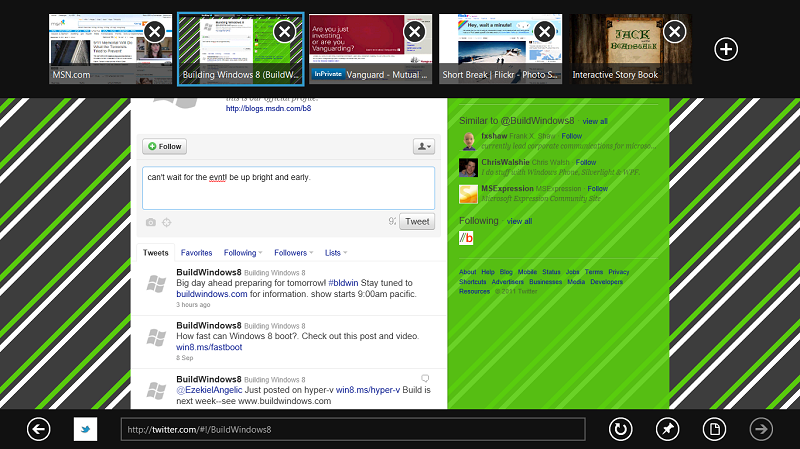Truly! We need this. It is an opportunity than a call or invitation. HTML5 is a mixed approach of HTML, CSS and JavaScript to improve web while keeping HTML standards consistent.
HTML standard was introduced in 1990, and standardized as HTML4 in late 1997 by W3C. As of today HTML5 is still under development. It comes with new features which include the <video>, <audio>, <header> and <canvas> elements, as well as the integration of SVG content. In fact HTML5 consists of more than 100 specifications that relate to the next generation of Web technologies. These new stuff provide easy and convenient way to play with multimedia and graphical content on the web without using proprietary plugins and APIs like Adobe Flash, Silverlight etc.
Microsoft, as a member of W3C, has a key role in specification process of HTML5 and is investing in HTML5. Internet Explorer 9, the best HTML5 ready web-browser to date, is the illustration of Microsoft’s hard work.
Recently Microsoft showed Windows Developer Preview (Windows 8) in BUILD conference which comes IE10 having two faces viz. Desktop IE and Metro style IE. IE10 continues its legacy and has broad HTML5 support.
The Metro style IE, is as HTML5-only as possible and plug-in free to deliver touch-first browsing experience. The experience that plug-ins provide today is not a good match with Metro style browsing and the modern HTML5 web.

As Microsoft official B8 blog post reads, “Running Metro style IE plug-in free improves battery life as well as security, reliability, and privacy for consumers. Plug-ins were important early on in the web’s history. But the web has come a long way since then with HTML5. Providing compatibility with legacy plug-in technologies would detract from, rather than improve, the consumer experience of browsing in the Metro style UI.”
Plug-ins free websites are rapidly growing, for example Google’s recently launched HTML5 YouTube site for phones that deliver great experience with modern browsers. World’s top 97,000 sites use plug-ins and 62% of these sites that currently use Adobe Flash already fall back to HTML5 video in the absence of plug-in support. So HTML5 does make senses in such scenarios.
The power of HTML5 is an opportunity to enhance the web experience with touch in Metro style IE. Let’s go HTML5!

Leave a Reply